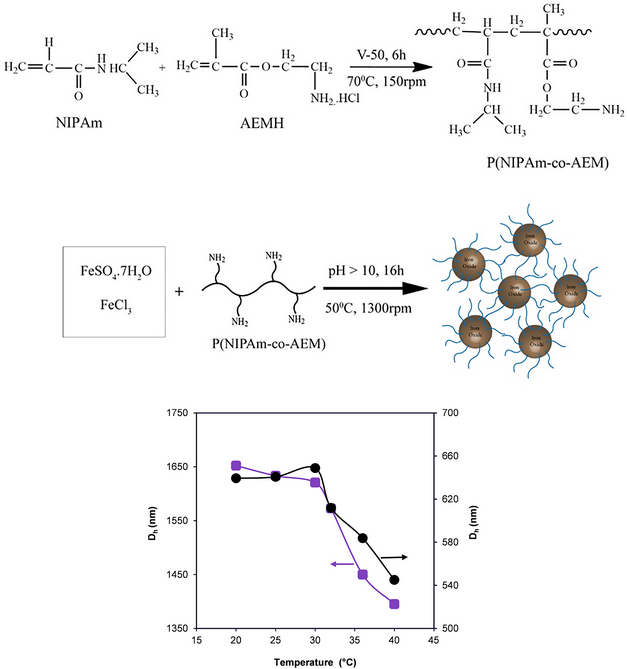Crossref Citations
This article has been cited by the following publications. This list is generated based on data provided by
Crossref.
Popova, Victoriya
Dmitrienko, Elena
and
Chubarov, Alexey
2022.
Magnetic Nanocomposites and Imprinted Polymers for Biomedical Applications of Nucleic Acids.
Magnetochemistry,
Vol. 9,
Issue. 1,
p.
12.
Bulgakova, Anastasia
Chubarov, Alexey
and
Dmitrienko, Elena
2022.
Magnetic Nylon 6 Nanocomposites for the Microextraction of Nucleic Acids from Biological Samples.
Magnetochemistry,
Vol. 8,
Issue. 8,
p.
85.
Xu, Jiaxin
Tian, Yuan
Li, Zibiao
Tan, Beng Hoon
Tang, Karen Yuanting
and
Tam, Kam Chiu
2022.
β-Cyclodextrin functionalized magnetic nanoparticles for the removal of pharmaceutical residues in drinking water.
Journal of Industrial and Engineering Chemistry,
Vol. 109,
Issue. ,
p.
461.
Singh, Nirbhai
Yadav, Saurabh
Mehta, Surinder K.
and
Dan, Abhijit
2022.
In situ incorporation of magnetic nanoparticles within the carboxymethyl cellulose hydrogels enables dye removal.
Journal of Macromolecular Science, Part A,
Vol. 59,
Issue. 4,
p.
271.
Nguyen, Thi Phuong Thu
Ménager, Christine
Rieger, Jutta
and
Coumes, Fanny
2023.
Rational design of stimuli‐responsive magnetic polymer hybrid (nano)materials.
Polymer International,
Vol. 72,
Issue. 10,
p.
899.
Bednarikova, Zuzana
Kubovcikova, Martina
Antal, Iryna
Antosova, Andrea
Gancar, Miroslav
Kovac, Jozef
Sobotova, Radka
Girman, Vladimir
Fedunova, Diana
Koneracka, Martina
Gazova, Zuzana
and
Zavisova, Vlasta
2023.
Silica-magnetite nanoparticles: Synthesis, characterization and nucleic acid separation potential.
Surfaces and Interfaces,
Vol. 39,
Issue. ,
p.
102942.
Ghasemi, Zahra
Labbaf, Sheyda
Enayati, Mohammad Hossein
and
Mohammadzadeh, Mahsa
2023.
Feasibility of magnetite-poly(n-isopropylacrilamide) smart nanocarriers containing doxorubicin for cancer therapeutic applications.
Materials Chemistry and Physics,
Vol. 309,
Issue. ,
p.
128377.
Jahan, Most. Nusrat
Alam, Md. Ashraful
Rahman, Md. Mahabur
Hoque, S. Manjura
and
Ahmad, Hasan
2024.
Mesoporous Fe3O4/SiO2/poly(2-carboxyethyl acrylate) composite polymer particles for pH-responsive loading and targeted release of bioactive molecules.
RSC Advances,
Vol. 14,
Issue. 32,
p.
23560.
Kelarakis, Antonios
2024.
In Situ Generation of Nanoparticles on and within Polymeric Materials.
Polymers,
Vol. 16,
Issue. 11,
p.
1611.
Mohammed, Ali A.
Yao, Keyu
Ragaisyte, Ieva
Crestani, Dominic
Myant, Connor W.
and
Pinna, Alessandra
2024.
Stable and homogeneous SPION-infused Photo-Resins for 3D-printing magnetic hydrogels.
Applied Materials Today,
Vol. 37,
Issue. ,
p.
102082.
Islam, Md. Muhyminul
Rahman, Md. Abdur
Alam, Md. Ashraful
Rahman, Md. Mahbubor
Mefford, O. Thompson
Ul-Hamid, Anwar
Miah, Jalil
and
Ahmad, Hasan
2024.
Facile Fabrication and Characterization of Amine-Functional Silica Coated Magnetic Iron Oxide Nanoparticles for Aqueous Carbon Dioxide Adsorption.
ACS Omega,
Vol. 9,
Issue. 19,
p.
20891.
